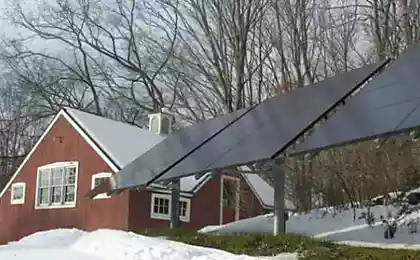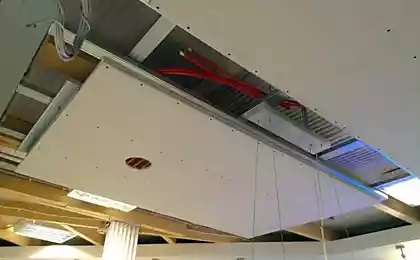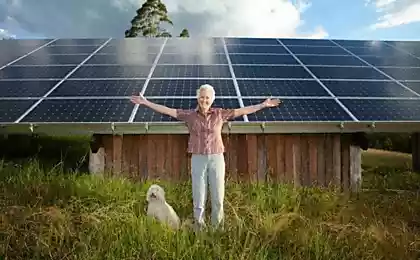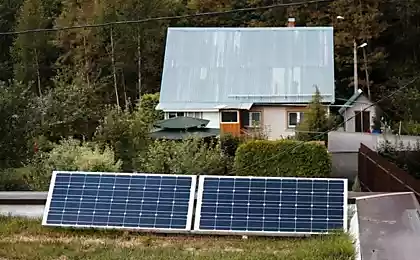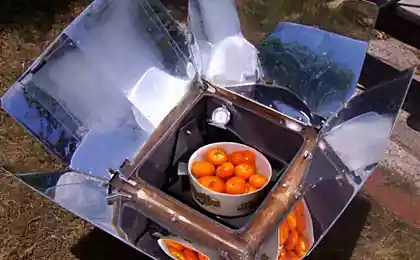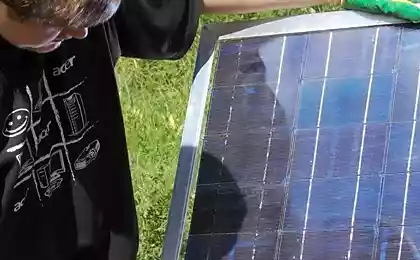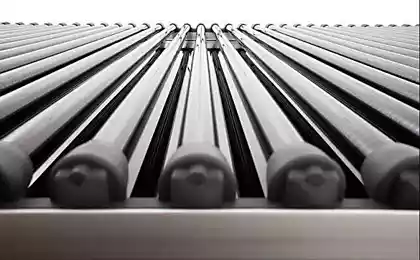452
In 2 years the market will see the solar panels of a new type
A team of engineers at MIT and the Institute of science and technology Masdar has developed a new type of solar cell that combines two different layers of absorbing sunlight to increase the range of absorbed energy. Such a "step" elements normally difficult to produce, but scientists were able to create new, more efficient process.
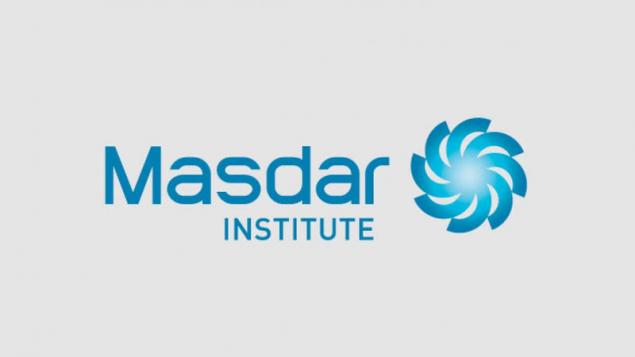
The step element can achieve theoretical efficiencies exceeding 40% and a practical efficiency of 35%. This prompted the leading researchers of the project, professors Ammar Nayfeh and Eugene Fitzgerald to create a startup for commercialization of a promising solar cell. According to their calculations, it will be ready for market within one to two years.
Silicon is now considered the gold standard for producing solar cells, but their efficiency is not large as 15-20%. In order to collect more high-energy photons, the scientists turned to other materials — gallium arsenide and gallium phosphide. The greatest performance they achieve when placed in layers and are configured so that each of them has absorbed your electromagnetic spectrum.
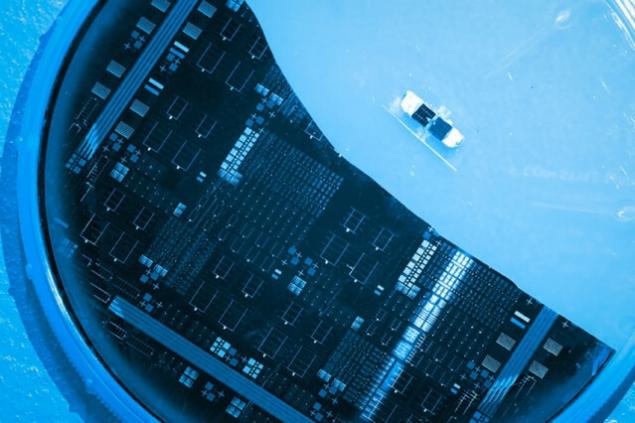
Such elements are much more expensive to manufacture, so they are used only in narrow areas, for example, in satellites where weight is of great importance. Elements of the University of Masdar and MIT are much cheaper, because are based on the fees, which can be reused.
The top layer gathers high-energy photons of blue, green and yellow light, and the bottom layer low-energy (red light).
"The gallium phosphide arsenide cannot be grown directly on silicon, because its crystal lattice is substantially different from silicon so that the silicon crystals disintegrate. So we've raised a phosphide of gallium arsenide on a more stable silicon-germanium-based," said Professor Nayfeh.
Scientists believe that their invention will take place between stocks large quantity and low-efficiency solar cells. Now when this empty niche is occupied, the cost of production of such elements should fall even lower. published
Source: hightech.fm/2016/08/29/step-cells

The step element can achieve theoretical efficiencies exceeding 40% and a practical efficiency of 35%. This prompted the leading researchers of the project, professors Ammar Nayfeh and Eugene Fitzgerald to create a startup for commercialization of a promising solar cell. According to their calculations, it will be ready for market within one to two years.
Silicon is now considered the gold standard for producing solar cells, but their efficiency is not large as 15-20%. In order to collect more high-energy photons, the scientists turned to other materials — gallium arsenide and gallium phosphide. The greatest performance they achieve when placed in layers and are configured so that each of them has absorbed your electromagnetic spectrum.

Such elements are much more expensive to manufacture, so they are used only in narrow areas, for example, in satellites where weight is of great importance. Elements of the University of Masdar and MIT are much cheaper, because are based on the fees, which can be reused.
The top layer gathers high-energy photons of blue, green and yellow light, and the bottom layer low-energy (red light).
"The gallium phosphide arsenide cannot be grown directly on silicon, because its crystal lattice is substantially different from silicon so that the silicon crystals disintegrate. So we've raised a phosphide of gallium arsenide on a more stable silicon-germanium-based," said Professor Nayfeh.
Scientists believe that their invention will take place between stocks large quantity and low-efficiency solar cells. Now when this empty niche is occupied, the cost of production of such elements should fall even lower. published
Source: hightech.fm/2016/08/29/step-cells
How to make a automatic light on from the old power supply for computer
Baklavas Greek: amazing Oriental sweet

